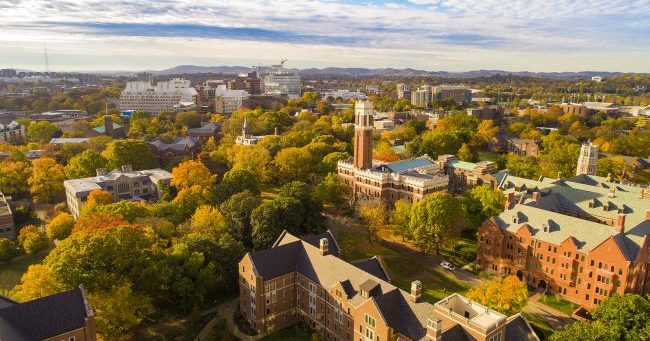Text by Kim Green
Photos by John Russell
Illustrations by Kelly Thompson
When Bishop Holland McTyeire oversaw the planting of more than a thousand trees on Vanderbilt’s campus nearly 150 years ago, he set in motion a time-release canopy that now provides widespread shade for the university community. As steward of today’s arboretum, University Landscape Architect James Moore carries that legacy forward, working not only to beautify campus and preserve its botanical diversity, but also to study the trees’ resilience to disease and better understand how they absorb heat and stormwater for midtown Nashville.

Moore, a Nashville native with graduate degrees in urban planning from Harvard University and landscape architecture from the University of Virginia, sees himself as part of a multigenerational continuum of designers, arborists and grounds crews who have long cared for the arboretum—and helped seed its future. Last winter, he and the landscaping team planted dozens of maples and oaks around Alumni Lawn. “Planting a tree is an act of optimism,” he says, pointing out that a landscape architect’s design vision may take decades to be fully realized. “You hope in 20 to 30 years it becomes what you imagine.”
Moore currently is working with a team to create resources for the public, including an interactive tree map and self-guided audio tour of the arboretum. Here he shares a few of his favorite trees on campus and what he likes most about them.
Galloway's Ginkgo
Common name: Ginkgo, maidenhair tree
Scientific name: Ginkgo biloba
In a sheltered niche between the new E. Bronson Ingram College and historic Kirkland Hall, a ginkgo scrapes the sky. Its nickname comes from Vanderbilt lore—that Bishop Charles Galloway, Board of Trust president in the early 1900s, brought the sapling to the U.S. from Asia. Architects deemed this ginkgo too spectacular to cut down, so they designed Bronson College around the tree. Moore recommends this species for its toughness and primeval loveliness—especially in mid-November when its fan-shaped leaves fall all at once to create a golden carpet. “In the long, low afternoon sun,” he says, “this is one of the most beautiful places on campus.”
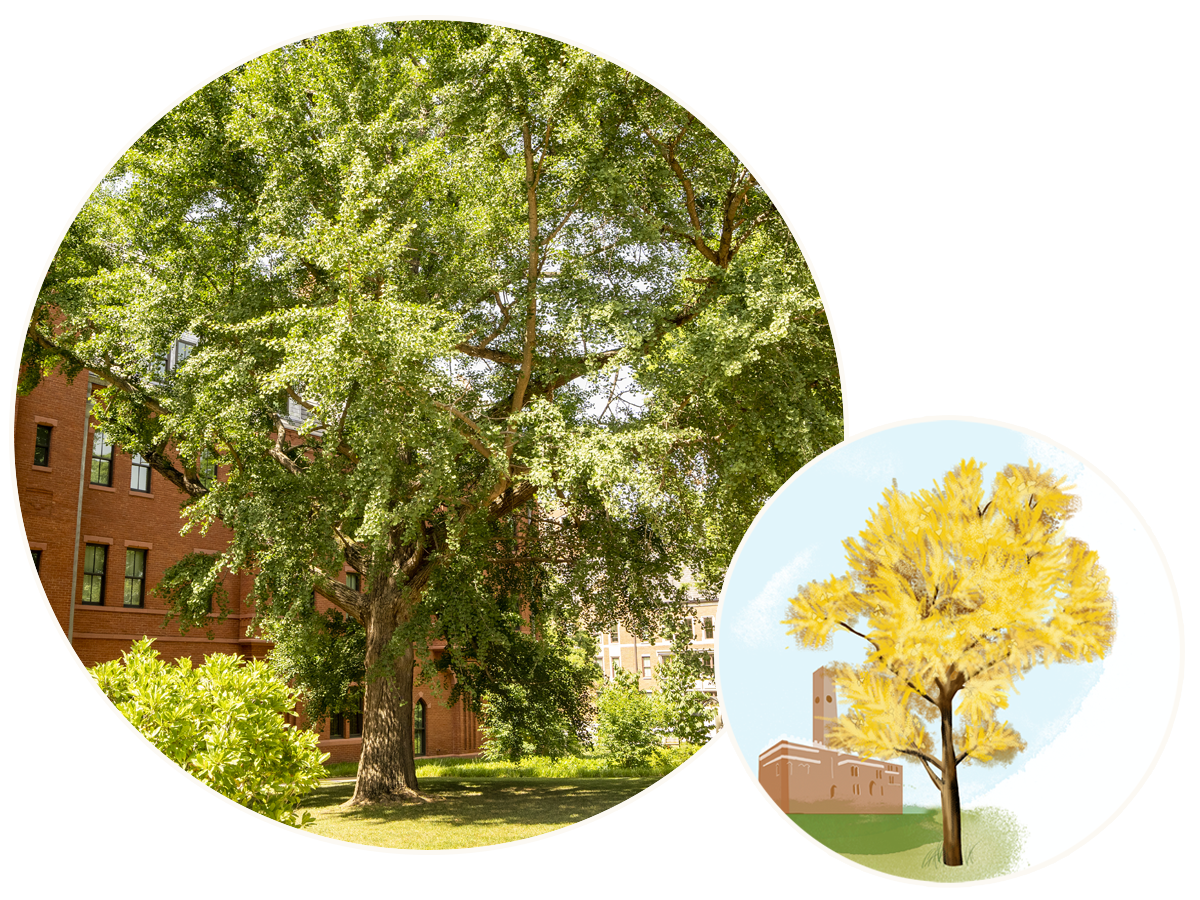
Catalpa in Bishops Common
Common name: Catalpa, northern catalpa, cigar tree, Indian-bean tree
Scientific name: Catalpa speciosa
Not far from McTyeire’s gravesite in Bishops Common stands a gnarled catalpa. Moore loves this often-overlooked native tree for its bell-shaped, white blooms, showy seed pods and dense clumps of heart-shaped leaves. In winter, its aspect is more serpentine. “I call it a Dr. Seuss tree,” Moore says, pointing out its twisted bark and weeping lower branches. “There’s not a straight line on it.”
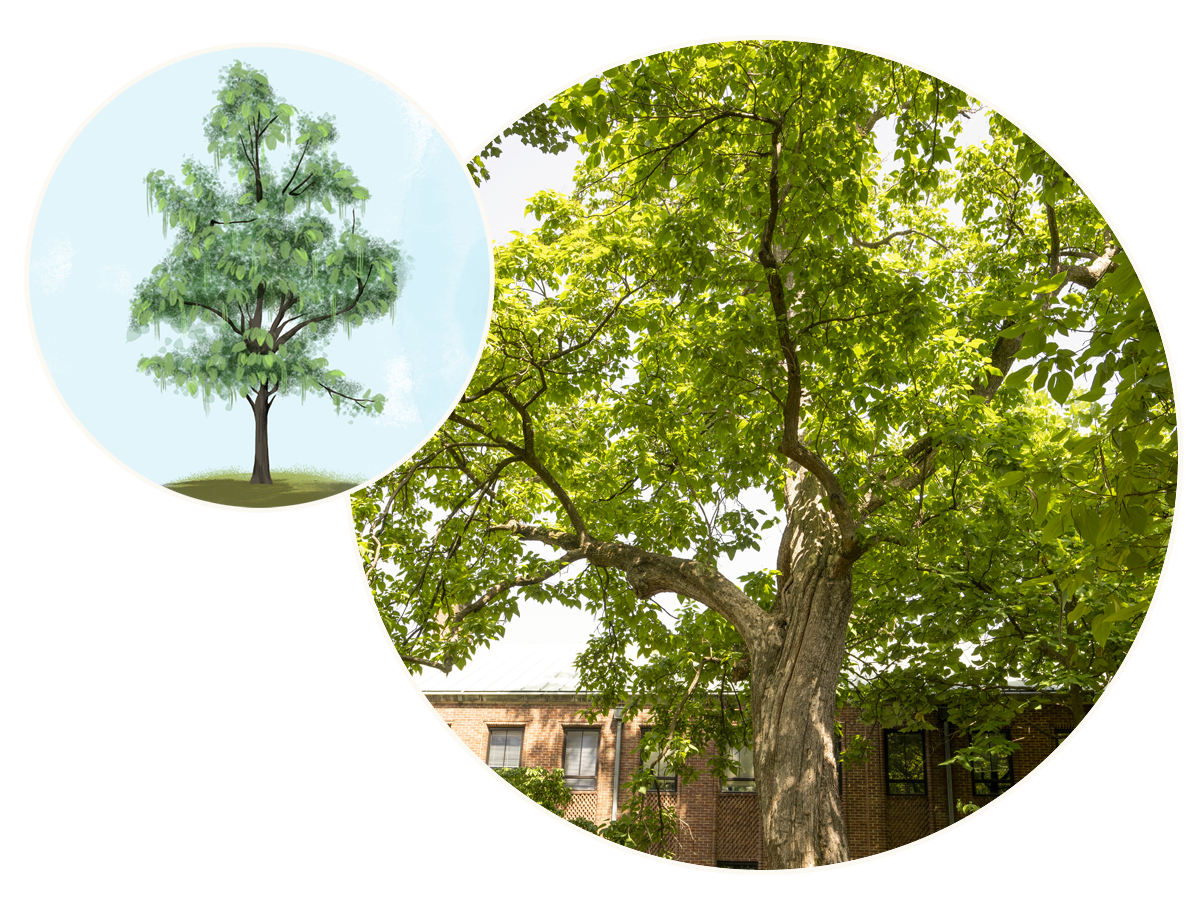
Serviceberry Row by Peabody Commons
Common name: Serviceberry, juneberry, shadbush, sugarplum
Scientific name: Amelanchier arborea
A tidy row of serviceberries dresses up an otherwise utilitarian walkway by the Hill Center. Moore appreciates this small native understory shrub for its colorful three-season display: delicate white flower clusters in early spring, brilliant orange autumn leaves and summer berries that morph from green to red to purplish-black. “The fruit’s pretty tasty,” Moore says. “But you’ll have to fight the cedar waxwings for it.”
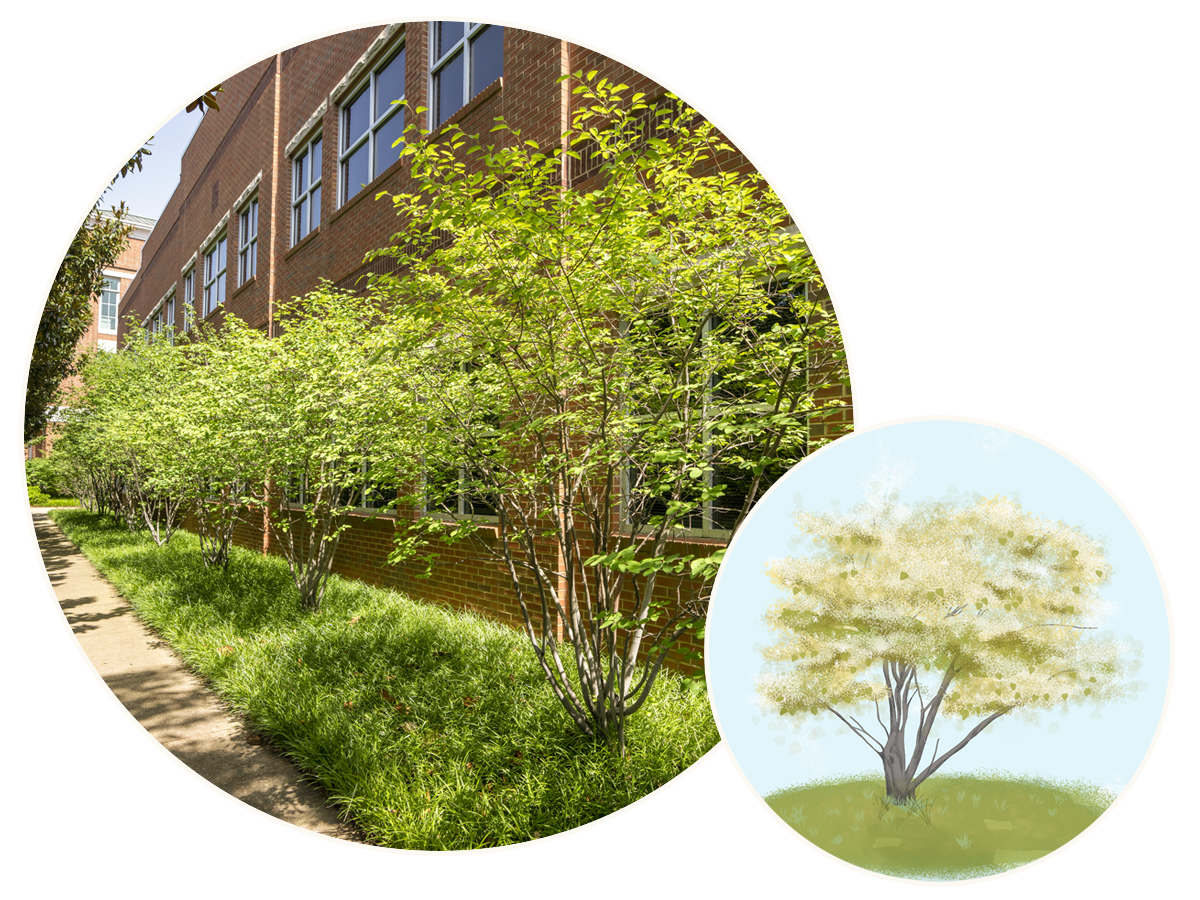
White Oaks on the Peabody Esplanade
Common name: White oak, northern white oak
Scientific name: Quercus alba
White oaks create an allée along the Peabody Esplanade like living Doric columns. Moore says this space, designed during the City Beautiful Movement around the turn of the 20th century, evokes “Jeffersonian order and stateliness.” His team recently replanted some damaged white oaks with different oak varieties to increase diversity and “future proof” the space. Moore recommends planting the white oak as “the greatest bang for your buck”—it’s a tough, long-lived native and excellent wildlife feeder and habitat.
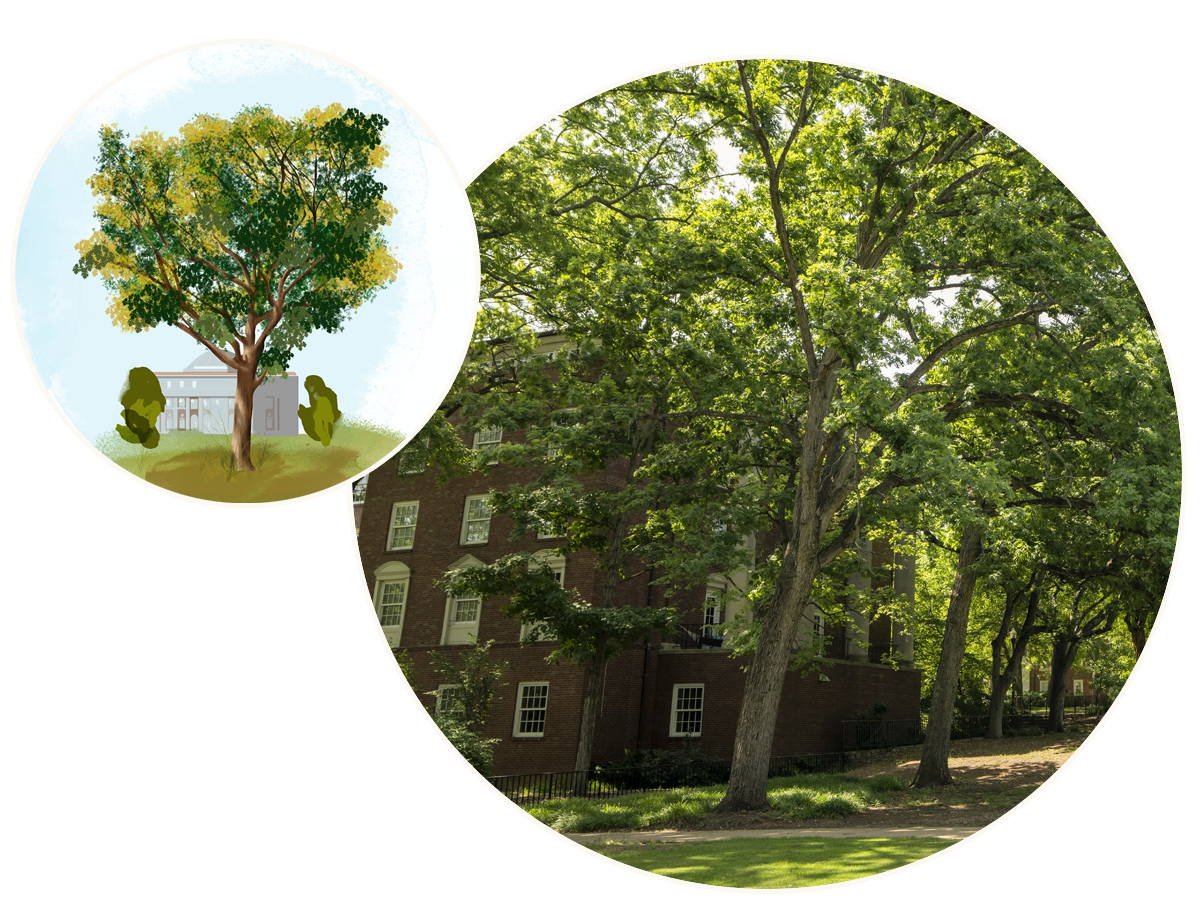
The Bicentennial Oak
Common name: Bur Oak
Scientific name: Quercus macrocarpa
The famous bur oak between Sarratt Student Center and Garland Hall is a living cathedral, its pillarlike trunk five feet in diameter and its branches buttressing a crown 100 feet wide. This tree predates the university—and possibly the American Revolution. Moore likes to stand in the massive oak’s presence and imagine what it has witnessed: Civil War battlements erected and destroyed, and a college rising from rolling pastureland. “Everything around this tree has changed, and it is still here,*” Moore says.
*In November 2022, the Bicentennial Oak unfortunately died and fell.
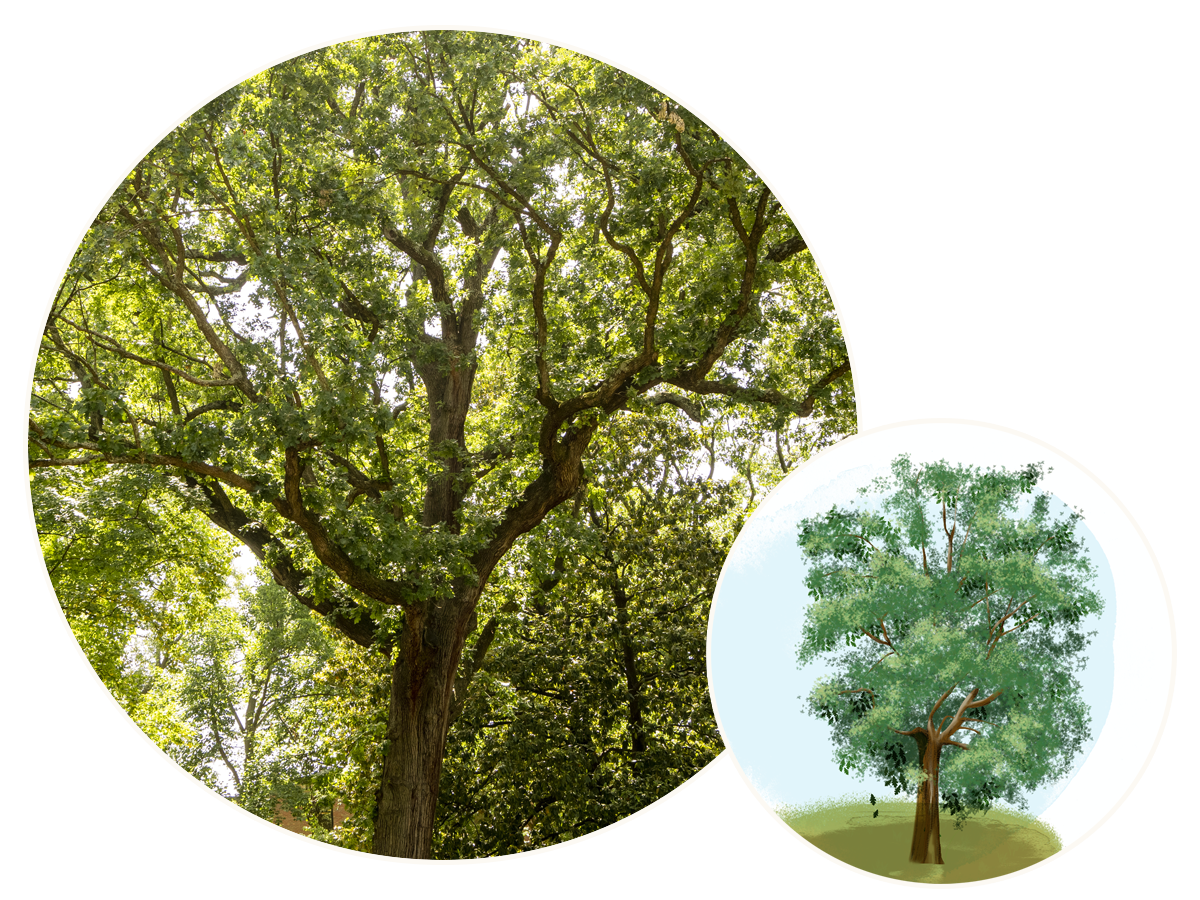
The arboretum’s white oaks are also helping to reforest Tennessee. Last year a joint project of the university, the Metro Tree Advisory Committee and the Tennessee Department of Forestry collected mountains of acorns to raise in nurseries. The seedlings will then be available to anyone who wants to plant a tree.
Find out how to acquire seedlings:
